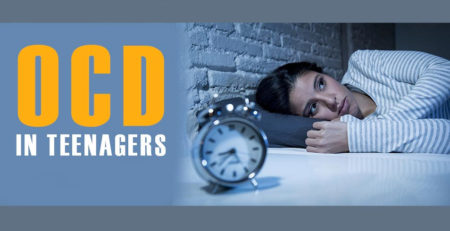Understanding Learning Disabilities in Teenagers
The teenage years can be challenging for anyone, but for those with learning disabilities, it can be even more challenging. Learning disabilities can affect a teenager’s ability to acquire knowledge and skills, which can significantly impact their academic performance and social life. Therefore, parents, teachers, and caregivers must be aware of the expected learning disabilities that affect teenagers and the signs and symptoms to look out for.
Risk factors for learning disabilities include:
1. Genetics
One of the most significant risk factors for learning disabilities is genetics. Learning disabilities can be passed down from parents to their children through their genes. If a parent has a learning disability, there is a greater chance that their child will also have a learning disability.
2. Environmental Factors
Environmental factors such as exposure to lead or other toxins can also increase the risk of developing a learning disability. Children exposed to information are more likely to develop problems with learning and behavior. Maternal exposure to certain toxins during pregnancy can also increase the risk of learning disabilities in children.
3. Low Birth Weight
Children born with low birth weight are also at an increased risk for developing learning disabilities. Low birth weight is associated with several health problems, including developmental delays and cognitive impairments.
4. Premature Birth
Premature birth is another risk factor for learning disabilities. Babies born prematurely are more likely to have developmental delays and other health problems affecting their learning ability.
5. Maternal Health Problems
Maternal health problems such as diabetes or hypertension can also increase the risk of learning disabilities in children. These health problems can cause pregnancy complications, leading to developmental delays and other problems that can affect learning.
6. Paternal Age
Paternal age is another risk factor for learning disabilities, and studies have shown that fathers over 40 are more likely to have children with learning disabilities than younger fathers. Additionally, older fathers are more likely to have children with autism spectrum disorder and attention deficit hyperactivity disorder.
7. Family History
Family history is another significant risk factor for learning disabilities. If someone in your family has a learning disability, you are also more likely to develop one. Additionally, if someone in your family has ADHD, dyslexia, or another specific learning disability, you may be at an increased risk for that particular condition.
Types of Learning Disabilities
Here are the main types of learning disorders.
1. Dyslexia
Dyslexia is a learning disorder that affects reading skills. People with dyslexia struggle with phonemic awareness, phonology, and word decoding. Dyslexia can also impact spelling, writing, and pronunciation.
Dyslexia is one of the most common learning disabilities in teenagers. It affects the brain’s ability to process written language, making it difficult for a teenager to read accurately and fluently. Signs of dyslexia include difficulty with spelling, reading comprehension, and writing, despite having average to above-average intelligence. Early detection and intervention are essential to help a teenager with dyslexia overcome these challenges, so it’s vital to seek professional help if you suspect your teenager may be struggling.
2. ADHD
Attention-deficit/hyperactivity disorder (ADHD) is a learning disorder that affects attention span, impulsivity, and hyperactivity. People with ADHD may have difficulty paying attention, sitting still, or controlling their impulses.
Another common learning disability is ADHD, or attention-deficit/hyperactivity disorder. This disorder affects teenagers’ ability to pay attention, control impulsive behavior, and sit still. Many teenagers with ADHD may struggle in school due to their inability to focus on their studies, leading to poor grades and low self-esteem. Treatment for ADHD typically involves medication, behavioral therapy, and lifestyle changes, such as exercise and a healthy diet.
3. Dyscalculia
Dyscalculia is a learning disorder that affects math skills. People with dyscalculia may have difficulty understanding numbers, calculating equations, or solving word problems.
Dyscalculia is a lesser-known learning disability that affects a teenager’s ability to process numerical information and perform mathematical calculations. Teenagers with dyscalculia may struggle with basic arithmetic operations, such as addition, subtraction, multiplication, and division. They may also work with time, measurement, and money. Several strategies, including the use of visual aids and hands-on activities, can be employed to help teenagers with dyscalculia learn math.
4. Dysgraphia
Dysgraphia is a learning disorder that affects writing skills. People with dysgraphia may have difficulty with handwriting, spelling, and grammar.
Dysgraphia is a learning disability that affects a teenager’s ability to express themselves through writing. Teenagers with dysgraphia may have difficulty with handwriting, spelling, sentence construction, and organization. They may also struggle with expressing their ideas in written form, making it challenging to complete written assignments and communicate effectively. Several strategies, such as using assistive technology and alternative forms of expression, can help teenagers with dysgraphia improve their writing skills.
5. Auditory Processing Disorder
Auditory processing disorder (APD) is a learning disorder that affects how the brain processes auditory information. People with APD may have difficulty understanding speech, following directions, or rememberings things they have heard.
6. Visual Processing Disorder
Visual processing disorder (VPD) is a learning disorder that affects how the brain processes visual information. People with VPD may have difficulty interpreting what they see, distinguishing between similar-looking objects, or remembering what they have seen.
7. Nonverbal Learning Disorder
Nonverbal learning disorder (NLD) is a learning disorder that affects social skills and nonverbal communication, such as body language and facial expressions. People with NLD may have difficulty reading social cues, making friends, or participating in group activities.
8. Central Auditory Processing Disorder
Central auditory processing disorder (CAPD) is a learning disorder that affects how the brain processes auditory information from both ears. People with CAPD may have difficulty understanding speech in noisy environments or locating the source of sounds.
Auditory processing disorder (APD) is a learning disability that affects a teenager’s ability to recognize and interpret sounds. Teenagers with APD may struggle to distinguish between similar-sounding words, follow directions, or remember verbal instructions. This can lead to challenges in the classroom, social situations, and daily life. Treatment for APD may involve auditory training, speech therapy, and other methods designed to improve a teenager’s ability to process auditory information.

Signs of a Teen Learning Disability
1. Difficulty with reading comprehension
One of the most common signs of a learning disability in teens is difficulty with reading comprehension. This can manifest itself in several ways, such as being unable to read and understand textbooks or following along with lectures in class. Additionally, teens with learning disabilities may have difficulty remembering what they have read or retaining information from what they have heard.
2. Difficulty with written expression
Another common sign of a learning disability is difficulty with written expression. This can include problems with grammar, spelling, punctuation and difficulty organizing thoughts on paper. Teens with learning disabilities may also have trouble writing essays or reports and struggle to express themselves clearly in writing.
3. Difficulty with mathematics
Many teens with learning disabilities also struggle with mathematics. This can manifest in several ways, such as having difficulty understanding concepts, being unable to do calculations accurately, or having trouble solving math problems. Additionally, teens with learning disabilities may have trouble remembering mathematical formulas or procedures.
4. Difficulty with organization and time management
Many teens with learning disabilities also struggle with organization and time management skills. This can make it difficult for them to keep track of assignments, due dates, and other important information. As a result, they may often miss deadlines or forget to turn in important papers or projects. Additionally, they may have difficulty planning and carrying out long-term projects.
5. Difficulty with listening and paying attention
Another common sign of a learning disability is difficulty listening and paying attention. Teens with this problem may often daydream in class or be easily distracted by their surroundings. Additionally, they may have trouble following directions or completing tasks that require sustained attention.
6. Difficulty speaking clearly
Many teens with learning disabilities also struggle with speaking clearly, making it difficult for them to be understood by others, leading to frustration and social isolation. Additionally, teens with this problem may have trouble following conversations or participating in group discussions.
However, a teen with some symptoms doesn’t necessarily have a learning disability. Therefore, correctly diagnosing a teen learning disorder can be very difficult, so an expert assessment is required.
Here are some main reasons why learning disabilities can lead to low self-esteem and other teenage challenges.
Lack of a learning disability diagnosis
Learning disabilities are an unfortunately common challenge that many children and teenagers face. When these disabilities go unrecognized by their doctors, the consequences can be severe. Without the proper support and resources, these students may struggle to succeed in and out of the classroom. Unfortunately, the lack of knowledge among teachers and parents about these disabilities can lead to misunderstandings and, in some cases, even punishment for behaviors outside the child or teen’s control. This can be difficult for the student and lead to adverse outcomes, including an increased likelihood of school suspension. By raising awareness about learning disabilities, we can help ensure all students receive the support they need to thrive.
Bullying or other social stressors
A learning disability can present numerous challenges for children and teens, including difficulties with socialization. Unfortunately, this often leads to an increased risk of bullying and teasing by their peers. Beyond that, these children and teens may struggle to fit in and feel accepted by others. Shockingly, a national survey conducted by Children and Adults with ADHD revealed that approximately one-third of kids with ADHD are encouraged by their peers to act out and get into trouble. As a result, parents, caregivers, and educators must work together to support children and teens with LDs, helping them to develop the social skills essential for their future success.
Dropping out of school
Teens with learning disabilities face unique challenges in school, and unfortunately, they are more likely to drop out than their peers. The gap in graduation rates between students with disabilities and the national average is significant, with these students graduating at a rate of only 61.9 percent. This issue is concerning because dropping out of school puts teenagers at risk for multiple adverse outcomes, including substance abuse, teen pregnancy, and involvement in illegal activity. Research indicates that many young adults with learning disabilities have been involved with the justice system. While experts believe that low self-esteem and stigma may contribute to this problem, we must recognize the challenges faced by these students and work to support them in achieving their goals.
Ways to Support a Teen with Learning Disabilities
Many teen challenges can be alleviated with the help of sensitive parents and teachers.
Focus on strengths.
Teenagers need to recognize and appreciate their strengths as they navigate through adolescence. Whether it’s artistic talent, writing skill, athletic ability, or being a good friend to others, identifying their strengths can build self-confidence and self-esteem. When teens understand what they excel at, they can focus on developing and using those skills to their advantage. Encouraging teens to explore their interests and passions can expose them to new experiences and opportunities. By recognizing and appreciating their strengths, teenagers can achieve a greater sense of self-awareness and work towards reaching their full potential.
Create routines and structure.
Living with a learning disability can be challenging, particularly for children and teens. Many individuals with LDs struggle with disorganization in their daily life, which can make completing tasks and keeping up with their responsibilities difficult. The good news is that there are strategies that parents, teachers, and caregivers can employ to help children and teens with LDs stay organized and on track. Creating clear routines and schedules for tasks such as homework and self-care can be incredibly helpful in providing structure and promoting consistency. Additionally, setting up easy-to-use storage and work spaces can help keep time and space organized, contributing to clarity and focus. Children and teens with LDs can learn to thrive and succeed with proper support.
Empower them to make choices about their learning.
Learning can be challenging for teenagers with LDs, making decision-making even harder. To foster their confidence and independence, it is essential to encourage them to engage in activities they enjoy and feel empowered by. Cooking, building a project, or making a movie are such activities. By allowing them to explore their passions, teens will gain a stronger sense of themselves and their abilities. Empowering them will increase self-esteem and a sense of accomplishment, ultimately enabling them to make more confident decisions in other areas of their lives.
Seek expert guidance.
If you’re worried about your teen’s academic or emotional well-being, it’s important to remember that you don’t have to go it alone. Reaching out to education, behavior, and mental health professionals can make all the difference in supporting your teen as they navigate life’s challenges. From guidance counselors and tutors to therapists and psychiatrists, a range of experts is available to provide information and tools to help your teen flourish. Whether they’re struggling with a particular subject in school or dealing with anxiety or depression, there is help and support. So if you or your teen are feeling overwhelmed, don’t hesitate to reach out and ask for the assistance you need to help them become their best selves.
In conclusion, learning disabilities can significantly impact a teenager’s academic and social life. Identifying and addressing these disabilities early on can make a massive difference in helping teenagers overcome these challenges. If you suspect that your teenager may have a learning disability, it’s essential to seek professional help. With the proper support and interventions, teenagers with learning disabilities can go on to achieve academic and personal success.











